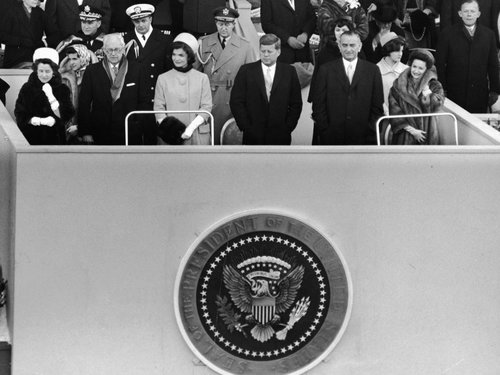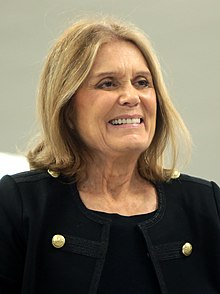with Rev. Clay Nelson
Read below, or download the PDF
Follow this shortcut to the bottom of the page for the Time For All Ages, Opening & Closing Words, Postlude.
Clay Nelson © 28th June 2020
When I was twelve I was inspired like many Americans of my generation by John F Kennedy’s words at his inauguration:

“Let the word go forth from this time and place, to friend and foe alike, that the torch has been passed to a new generation of Americans — born in this century, tempered by war, disciplined by a hard and bitter peace.”
In my youth I was convinced I and those of my generation could change the world. Yes, the world has changed but, alas, not always for the better, it could be argued. There is still plenty of work to do for those who come after my generation. Fifty-nine years after hearing JFK I am more inspired by Gloria Steinem’s words:

“At my age, in this still hierarchical time, people often ask me if I’m ‘passing the torch.’ I explain that I’m keeping my torch, thank you very much — and I’m using it to light the torches of others.”
― Gloria Steinem,
Outrageous Acts and Everyday Rebellions
Her words capture in me a recognition that was a long time coming, that changing the world begins with changing me. We can’t light anyone else’s torch if ours has burnt out.
This is true for faith communities just as much as it is for individuals. But, alas, organised religion has a history of being hostile to change. I have been a witness to a lot of it. Its rap sheet is long and painful. In the Anglican tradition I was steeped in, it goes back to 1549 when the Church of England published the first Book of Common Prayer after being excommunicated by the Pope. It was an attempt both to standardise worship and to write into stone the doctrines and dogma of the English Protestant Reformation. The people rioted in opposition to the change. In 1552, Elizabeth I published a less radical version to mollify traditionalists. In 1604 James I made some small changes. After the English Civil War further modest changes were made in 1662. Since that time, Parliament has refused to authorise any more updates. Four hundred and thirty-eight years later it is still the official prayer book of England and her colonies. Fifteen years ago, when I first began my ministry at St Matthew’s, it was still the version used at the 8.00am service. When I could stomach it no longer I dropped it over the objection of the majority in that congregation for the most traditional, but still much more modern, option in the New Zealand Book of Common Prayer.
This is just one example of religious resistance to change. The list is long in just my lifetime. There was the battle over supplanting the King James Version of the Bible in worship with versions that were more accurate translations of the Greek and Hebrew. When the idea of introducing inclusive language to scripture and worship was first proposed you would’ve thought the end of the world was nigh. On other fronts there was the controversial decision to stop ex-communicating divorced persons. There was the long, difficult battle to let girls become acolytes, quickly followed by the push to ordain women first as deacons, later as priests and lastly, as bishops. Updating the 1929 American Book of Common Prayer in 1978 was a bloody battle causing schisms. But it was a blip on the radar screen compared to the outrage induced by allowing same-sex marriage and ordaining gay and lesbian people to the ministry.
Do not think for a minute that Unitarians welcome change any better than other faith groups. Sometimes we have belatedly acknowledged its necessity sooner than others, but blood has still been let. Our scars remind us that keeping our torch lit frequently cost us painful blisters. Even so there have been times it still smoked on the verge of being snuffed out by intransigence, a stubborn refusal to leaving the familiar and comfortable.
My musings this week have flowed on from last week’s reflection on Gavin, the indoor butterfly. I keep wondering why I and Unitarianism struggle to envision what the church needs to become in a post-pandemic world (at least here in Aotearoa). It turns out we are not alone. I can’t think of an aspect of our society that isn’t being plagued by this challenge. Crystal ball gazing has become a cottage industry.
In an article pointed out to me by one of our staunch pillars of this congregation I was offered some useful insights. In her “Imagining a different world and making it happen” Jess Berentson-Shaw, co-director of the Wellington think tank, The Workshop, offers reasons for our resistance to seeing necessary change and implementing it.
She begins by acknowledging that It was Milton Friedman, of all people, who accurately noted that it is the ideas we carry with us into a crisis, or that we push forward from it with, that will determine what happens next. As you know by this time I’m no fan of Friedman’s destructive neoliberal philosophy, but we who would welcome its demise in a post-Covid world can learn from his observation. His neoliberal values and approach created the world we have had to live with for the past forty years. I would greatly prefer a world reflecting the values in our Seven Principles than those that sacrifice people and our planet for the sake of wealth accumulated by a few. So, I’m willing to learn from him, yet doing as Friedman did is difficult. Berentson-Shaw argues,
“Most of us find it hard to imagine a world that is different from what we have now. Facing complex issues in society, many people just can’t see a way out. Partially because many find it hard to see the systems and structures, practices and institutional hierarchies that shape our world and our responses. Rather many people, explain and understand the world in terms of the things they see, smell, touch and taste now. The visible, concrete behaviours and individual choices. Such mental models are a powerful force that cannot be ignored in work that wants to engage with the transformation of systems like policy making, or business practice, or the economy.”
Or, I might add, faith communities and their practices.
The article made me aware of Daniel Kahneman, who won a Nobel prize for his decades of work uncovering all of the ways our mental processing systems work to protect our existing mental models and beliefs. Explaining that we have a “fast thinking” system that will protect what we already believe for the very pragmatic reason that we cannot stop and relearn everything we have learned every second of every day. It is this system that makes transformation challenging. And it is why vision making is so important. It helps to overcome some of the biases of this “fast thinking” system, it can even engage our second system — the “slow thinking” one.
Berentson-Shaw asks, “What is vision making?”
“Vision making is the process of imagining a new future, what life would look like if we chose different tracks to travel than the ones we are taking now. It gives people hope and a view to what is possible if we choose to make it so. To see that the future is not inevitable but uniquely shaped by people.
“But there is a difference between utopian vision making that people cannot see themselves in or believe is possible (that doesn’t overcome our fast-thinking) and vision making that leads to change.
“… the most effective visions will show people the better world in meaningful concrete ways, lay out a clear process for change and be clear on who can make the change within a system and structure.”
More on this next week when I will go more into Kahneman’s ideas from his book, Thinking, Fast and Slow. I hope to show a meaningful way to keep our torches lit that we might light those of others.
Breakout
Links
Opening Words are “Here’s to the crazy ones” by Rob Siltanen.
Closing Words are “Blessed is the Path” By Eric Williams